Caldwell navigating Yosemite’s Dawn Wall. Don’t worry if you missed the first screening; it’ll be back in theaters on October 8th. Corey Rich/Red Bull Content Pool photo.
In the middle of a climbing lesson in Estes Park, Colorado, a hailstorm engulfed Josh Lowell and his guide, Mike Caldwell. Fleeing the storm, they out sought shelter in a nearby cabin. While they waited for the storm to pass, Caldwell began to rave about his nine-year-old son. The kid could do 50 pull-ups, the guide claimed proudly. Lowell listened in disbelief. That nine-year-old was no ordinary kid; it was Tommy Caldwell.
Lowell’s initial conversation back in 1989 with Mike Caldwell would spark a long-running fascination with Tommy and his career a climber. Five years later, the two would cross paths again, this time while Lowell was in college. He competed alongside Caldwell in rock climbing competitions and marveled at his exceptional skill. As his career in film developed, Lowell would eventually cross paths with the climber again in 2003. This time it was behind the lens at Oregon's Smith Rock. However, throughout their friendship, the director had grown to know the climber more than just on the wall. He knew Caldwell through the challenges, for instance, when terrorists kidnaped Caldwell and his climbing team on an expedition in Kyrgyzstan. As well as the time when Caldwell famously lost his index finger from a freak accident while remodeling his home. Despite the many hardships he’s had to overcome, Caldwell has yet to lose his unyielding optimistic attitude and passion for climbing. That’s what impressed Lowell the most.
By the time Caldwell had approached him about this wild idea he had, climbing Yosemite’s 3,000-foot Dawn Wall, Lowell didn’t need any convincing to film alongside him. He wanted to see his story through. The entire project would take the team seven years to complete. By the time Caldwell and Kevin Jorgeson had done the unimaginable, they had captured the world’s attention. Even President Obama tweeted at the duo in congratulations of their accomplishment. While The Dawn Wall documents their quest to complete the elusive route, it isn’t solely a climbing film. It goes past the saga of their climb and digs deep into Caldwell’s incredible journey leading up to the final achievement.
The film will be returning to the theaters on Monday, Oct. 8th for an encore showing in over 500 theaters. Tickets are available here. We caught up with Lowell to learn more about the logistics of seeing the seven-year project to its completion. Here’s what director Josh Lowell had to say:
Their goal was to make this a story that could be appealing to anyone, not just the climbing community. Corey Rich/Red Bull Content Pool Photo.
What’s interesting about this film is that it’s about more than just the Dawn Wall. Can you unpack that a bit?
JL: Yeah, it’s [Tommy’s] life story, that infamous 2015 ascent, and the whole seven-year mission to do the climb. It also follows the relationship that develops with Kevin throughout this process. There’s a lot going on; it’s a very human story beyond the climbing.
The people who know nothing about climbing or know nothing are the ones we’re finding that are having their minds blown.
How long did it take to complete the film?
JL: We spent about seven years filming. First Tommy, and then Tommy and Kevin together attempting the climb itself. There’s also a lot of footage in it that we shot previous to [the climb], we got a lot of great archival footage of Tommy’s early life and previous climbs. It took us over two years to edit it and finalize the film. Another almost a year to get it out to the world.
Lowell laughs.
It has been a long process. Every time I was in a middle of edit stressed out about how to get through it I would just think about Tommy spending seven years banging his head against the wall—literally.
With a timeline that long how did you stay motivated to sustain the project?
JL: Keeping going on the shooting side, we’d put together pretty big shoots and spent a lot of time on the wall filming these guys. At the end of the day, we would always have great footage, but we didn’t have a movie unless we had an ending.
Regardless, we were committed to this project, and I never wanted to bet against Tommy.
This was basecamp for Caldwell and Jorgeson. Corey Rich/Red Bull Content Pool Photo.
Did the purpose of the film change the more you worked on it?
JL: We always knew if he succeeds on the climb, his life story would be a massive part of any film.
The biggest surprise came during their successful climb when they got across one of the hardest sections, pitch 15. When Tommy got across, The New York Times got ahold of the story, called the guys, and published a story right away. The next day it blew up all over the world, and the press was trying to call, text, and email them while on the wall. The following ten days became this media phenomenon.
I guess it was exciting because we had been filming [the climb] for six years and put out clips here and there about the project, and while climbers were following along, nobody else really cared about it. To see the whole world get excited about this story and follow along, from our perspective as filmers was a validation that we were really onto something that was fascinating.
The relationship between the two became a vital part in the film and made the story much more than about rock climbing. Corey Rich/Red Bull Content Pool Photo.
Were there any other pivotal moments for you?
JL: Yeah the central drama that happened on the climb is when Tommy had gotten across pitch 15, Kevin got stuck. He couldn’t get across. The story then became about their relationship, would they both be able to make it to the top? Would Tommy have to abandon Kevin and go to the top himself? How long would Tommy wait for him, or would Kevin give up and support Tommy through to the top?
That becomes a big drama point in the film, and that’s the sort of thing you can’t predict or script.
What’s it like filming alongside them and watching them go through this?
JL: It’s a fantastic experience to be hanging in the middle of a 3,000 ft wall by a little rope. We sat through storms on a tiny portaledge, and at the same, you have to figure out how to cook, go to the bathroom— mainly survive up there. Oh, and at the same time shoot a film. Dealing with survival and making art at the same time, it’s challenging.
Beyond the logistics, it’s intense to have a front-row seat right next to these pinnacle athletes doing one of the most incredible athletic feats of all time. Especially in the theatrical moments, for instance, when Kevin had been stuck for a full week on this same section. Falling over and over again. He spent two days just resting and waiting for the skin on his fingertips to regrow. He’s ready to try again, and we wait all day until the sun goes down. He’s climbing in the dark, so he has the coldest possible temperatures so he can stick to the rock.
You’re holding your breath the whole time. Trying to keep the camera steady but your heart is pounding. It’s more than just getting the action; you’re witness to all of it.
The whole world is watching, meanwhile, Lowell’s crew is there right next to Caldwell and Jorgeson the whole time. Corey Rich/Red Bull Content Pool Photo.
Considering that the climbers had to climb at night, how did that impact your ability to film?
JL: It’s ideal conditions for them climbing at night, but not suitable for us filming!
The first couple of years up there we struggled to get any usable images from filming at night. Over the course of seven years of shooting the actual technology changed enough that some of the most spectacular shots of the whole film are actually from the final [2015 climb] at night. The chips in the cameras got way more sensitive, new cameras became available that were way better at filming at low light, and LED technology changed a lot in those seven years. In the end, we were able to rig up small portable LEDs to cast light on the section they were climbing.
There’s a real drama to it, seeing these guys 2,000ft up on the wall and they’re just barely illuminated in a little bubble of light. For them, the whole rest of the world drops away because all they can see is a bubble of light six feet around them. They can see hand holds and foot holds, but they can’t see the ground or anything else. They like it because it helps focus them in, and for the visuals, it’s dramatic.
One camera guy was dedicated to bringing in the morning with fresh batteries and cards. Corey Rich/Red Bull Content Pool Photo.
Since you guys camped and filmed alongside them, how did you logistically make it happen?
JL: There was a base camp set up in the middle of the wall. That’s where Tommy and Kevin slept most of the time. They each had their own portaledge, and then the film team had their portaledge. Most of the time we had two guys who were staying on the wall the entire time, and then a third guy who would go up and down [the wall] each day. We had fixed ropes that would go to the camp from the ground.
It’s 1,200ft up on the ropes to get to the base camp. This guy Kyle Berkompas, who did it every day, got really fit. Jumaring up the ropes with a backpack of batteries, water, and memory cards is quite the workout. Every day he’d time himself to try to beat his record—he got in great shape by the end of it.
Editors note: At the beginning, it took Berkompas two hours to get up to basecamp, by the end he whittled his time down 40 mins.
When it comes to filming, gravity is going to keep pulling you, so the team devised a unique rope system. Corey Rich/Red Bull Content Pool Photo.
How did you guys rope up for the actual filming?
JL: Because El Cap is in Yosemite National Park you’re not allowed to film with helicopters or drones. So, we spent a lot of time trying to figure out how to get unique perspectives on the wall. When you’re shooting, most of the time you’re hanging from a rope attached higher above you on the wall. You’re always stuck shooting across the plane of the wall or straight down—so we wanted to figure out how to get away from the wall. Basically similar to an angle that a drone might get.
Our solution: we had a custom-made rope made that was 2,700ft long.
We rigged it really high up on the wall and then we had it anchored on the ground a quarter of a mile away from the base of the wall. We used that to slingshot a cameraman away from the wall. We had this complicated rig that would slingshot Brett [Lowell, the Director of photography] out 60ft from the wall. He’d be dangling in space 1,500 ft up and 60 ft away from the climbers. He also had ropes going side to side so he could move left and right.
If you're interested in learning more about the film, the film page has more information regarding the film tour.






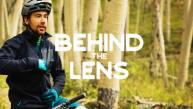
__video_thumb.jpg)


__video_thumb.jpg)

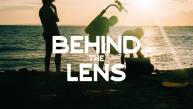

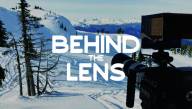

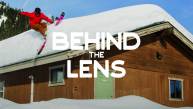
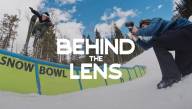
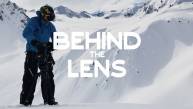
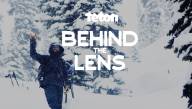
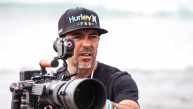
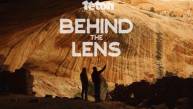

Delhidating
October 12th, 2018
We have Indian High profile models young ladies, Sexy College young ladies, Professional and Foreigner model Girls accessible 24x7 Services. We are offers the In-Call Services in 4*/5 Star lodging rooms and Out-call benefits just in Hotels. Escort Service
Escort Services
Jsun
October 19th, 2018
butt cheeks fully clenched. Not sure if i would have the nerves to hang like that hundreds of feet from the ground.
Freda
October 29th, 2018
This sports are beyond my limits. I am not a home buddy. I like adventure but not to this extent. I salute to those who can make this!
Iti Acharya
December 17th, 2018
You can catch her in Kannada, Malayalam and Tamil films. She has also worked on an independent Hindi film. Iti will soon be seeing starring in Bollywood movies.
Iti Acharya
Iti Acharya
Iti Acharya
Iti Acharya